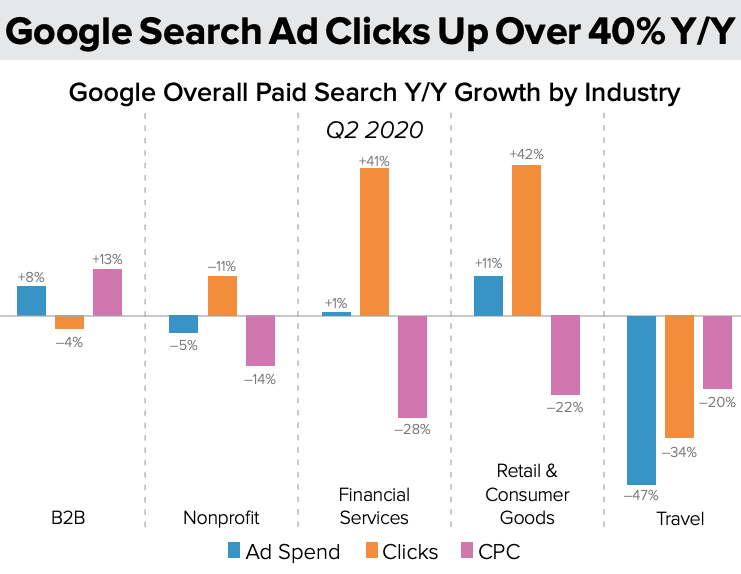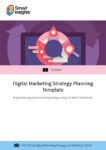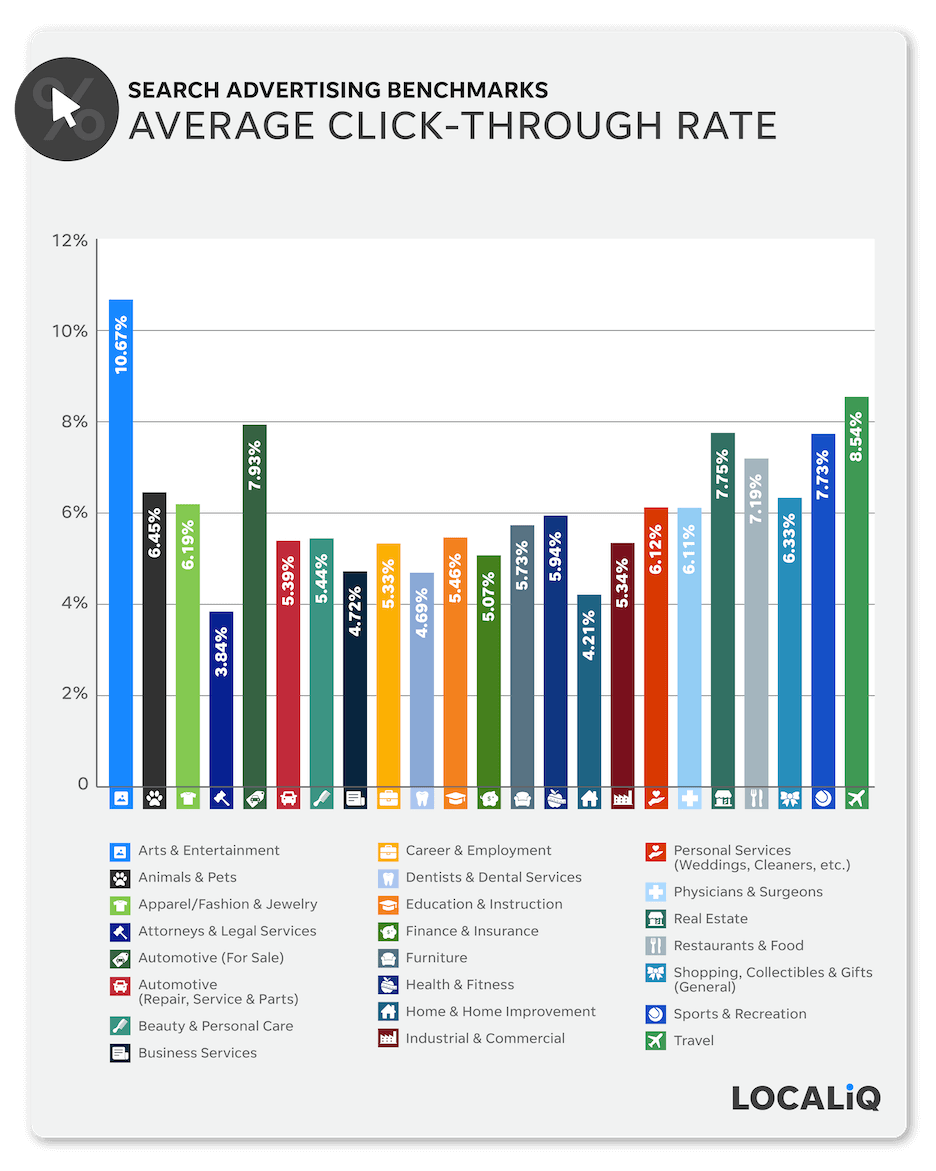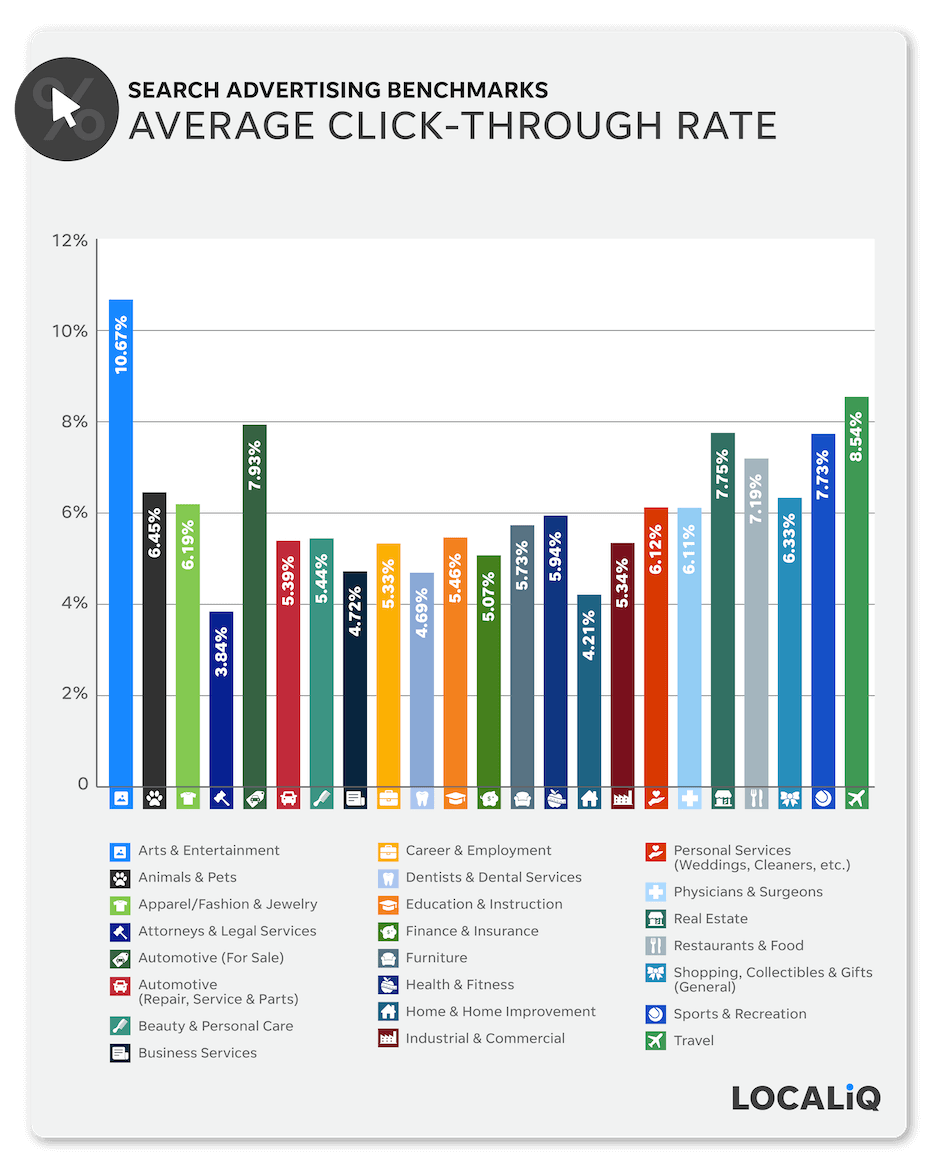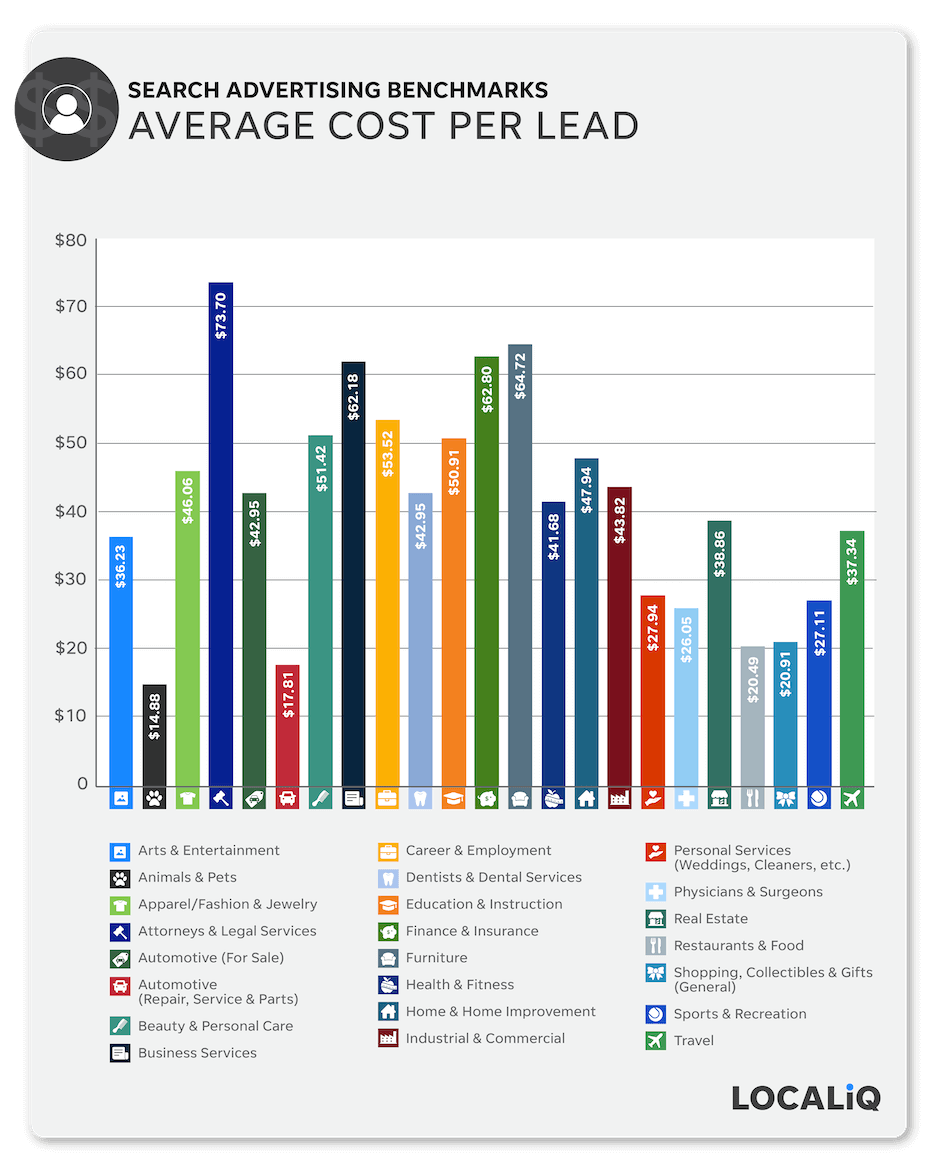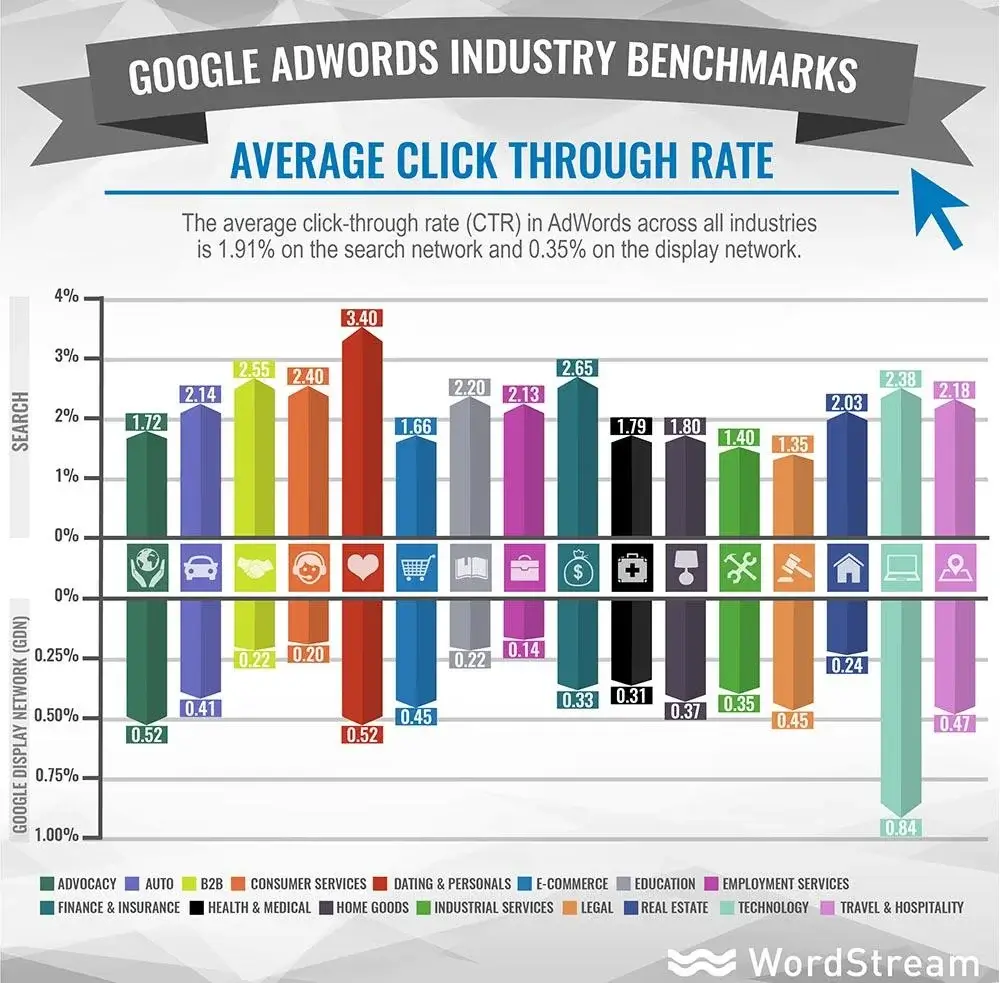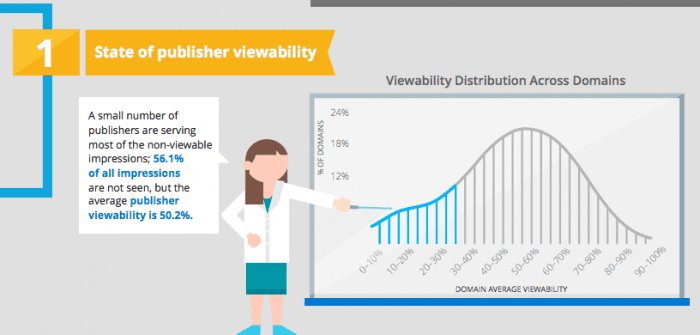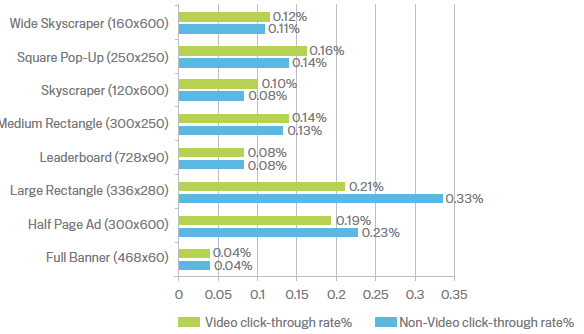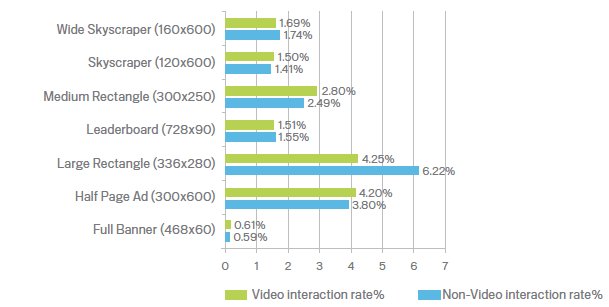US, Europe, and Worldwide ad clickthrough rates statistics comparing display ads to paid social and Google Ads average CTRs
I’ve put this compilation together to help marketing professionals create direct response conversion models for digital marketing campaigns. By creating budget models using known benchmarks for average CTRs and digital media click-through costs, you can better forecast your return-on-investment from digital media ads in 2022.
This data is particularly useful if you haven’t previously invested in advertising on publisher sites through ad networks or paid social media ads since it can help make the case and set expectations with colleagues or clients of the number of visits based on quantitative forecasts. As always, we recommend applying a targeted, data-driven approach to your marketing activities and we have tools and templates to help.
Looking for a digital marketing plan to reach and acquire more customers with digital media? Why not try our step-by-step integrated RACE digital marketing plan template? Our most popular free download helps managers, marketers, and small business owners streamline their planning and improve performance. Find out more about the RACE Framework and the integrated marketing strategy tools covered in this blog when you join Smart Insights as a Free Member.
Average CTR benchmarks – 2022 update
Throughout 2022 we will update our statistics summaries with the latest research as it becomes available. Stats are in three sections which answer these questions:
- Q. What are average display ad CTRs for different industries?
- Q. What average CPC/ cost per lead can industry marketers expect?
- Q. What are social media ad clickthrough rates – a comparison of Facebook, Instagram, LinkedIn and Twitter CTRs?
Search Marketing Benchmarks: Average click-through rate
According to LocalIQ September 2021 data, the average click-through rate for Google Ads is 3.17%. However, industries vary significantly around this data point. For example, arts & entertainment ads receive on average a 10.76% click-through rate, whereas attorneys & legal services 3.84&.
Of course, these figures are averages and in reality, CTRs tend to be higher for brand searches.
We also have a comparison of Google Clickthrough rates by position.
CPC cost per click/ cost per lead search advertising benchmarks
Cost per click in search advertising is driven by many factors. As demonstrated, in the table below, Attorneys & Legal Services which has the lowest CTR, demonstrates the highest cost per click at $8.78.
This is still a very reasonable cost considering the high-value potential for each customer lifecycle in this industry. Therefore it’s reasonable to presume that the CPC is driven up by high competition for a relatively smaller number of target customers (/clicks).
Cost per lead is calculated as the number of leads/number of clicks.
Since a high CTR campaign doesn’t necessarily mean more leads, this additional benchmark supports marketers in prioritizing high-quality leads. As you can see from the diagram below, cost per lead shows a different story to cost per click.
If you’re looking to identify and prioritize digital marketing channels for growth, don’t miss our step-by-step integrated RACE digital marketing plan template. Our most popular free download helps managers, marketers, and small business owners streamline their planning and improve performance. Find out more about the RACE Framework and the integrated marketing strategy tools covered in this blog when you join Smart Insights as a Free Member.
Google Ads (formerly AdWords) display network benchmarks
Wordstream’s Google Adwords industry benchmarks average CTRs focuses just on the Google Ads accounts they manage.
Here, the highest search CTR is for dating and personals whereas the lowest industry is legal. The highest display CTR is technology and the lowest is employment services.
However, these stats are higher than the Google average since they only represent accounts managed by WordStream.
Google benchmarks for ad placement
Unfortunately, Google has removed Doubleclick. So now we can only present previous data. No other alternatives are available as far as I’m aware. Please let me know via LinkedIn if you have good quality representative data we can share.
Previous Doubleclick data shows just than 5 clicks per 10000 impressions, showing the difficulty of driving direct response from online display or banner ads. Perhaps that is why Google no longer publishes this data…
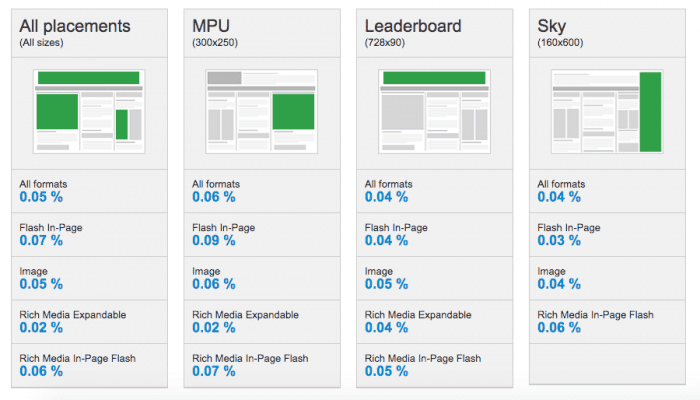
While this is a really low CTR, however you look at it, cross-media optimization shows that online ads do help increase brand awareness and purchase intent, particularly when combined with offline media.
It’s not the case that the majority of ad viewers have ‘banner blindness’ and are not aware of ads that are viewable placements. If this were the case, businesses wouldn’t invest in the level of display and programmatic ads that they do.
We also see much higher CTRs online for other online ad formats like Google AdWords and Facebook – these can exceed 1%, so are more effective in driving volume and also typically have higher intent, so conversion rates are higher.
Tests from the likes of Dynamic Logic and Millward Brown conclusively show that display ads also encourage site visits (view throughs) and searches even where people don’t click on ads.
Google responsive display ads
Note that more recently Google introduced Responsive Display ads on the Google Display Network as the default ad type. These involve uploading your assets (images, headlines, logos, videos and descriptions) and Google will automatically generate ads to be shown on the Google Display Network.
Reports from early adopters suggest that these can have relatively high CTRs. This example of CTRs compared a GGoogle Ads campaign provided by Smart Insights Expert commentator David Miles. It shows the uplift he received when testing this new format.
Still deciding where to invest your resources? Structure your marketing plan around a funnel proven to boost performance. Join Smart Insights as a Free Member for instant access to our free digital marketing plan template to hone your skills and drive the results you need.
What are social media average CTRs – a comparison of Facebook and Twitter?
Again, we will use the Q1 2020 ad benchmark report from AdStage as our primary data source. Here are the media CTRs for their clients in North America:
Facebook ad CTR
The average Facebook CTR in the newsfeed is 1.11%. This is trending downwards; a decrease of 0.37% compared to the previous year.
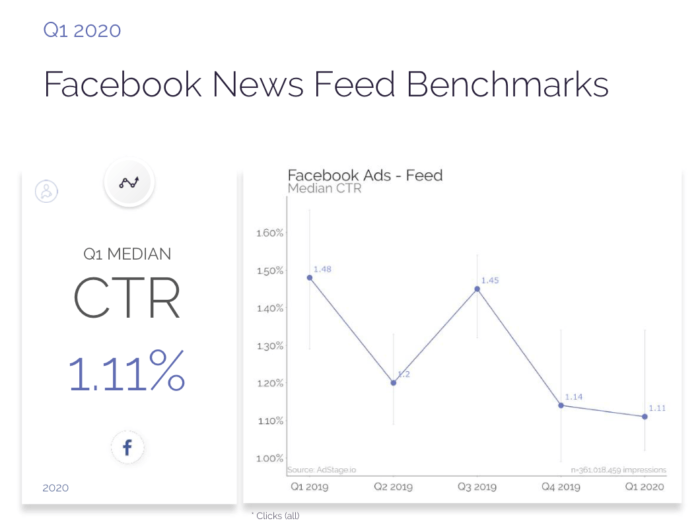
Other data reported includes:
- CTR on the right side placement averages just 0.16%.
- Facebook Stories have an average CTR of 0.79%.
- Facebook Audience network is 0.69% (mainly used for promoting apps such as gaming apps on publisher sites and in apps). This uses a range of ad formats such as display, native and video.
Instagram ad CTR
Instagram ad clickthrough rate in the feed is 0.22%, significantly lower than in the previous year and much lower compared to Facebook. This reflects the visual nature of Insta which doesn’t offer opportunities for CTR in organic newsfeeds (other than Stories). Benchmarks for Stories are a little higher at 0.33%.
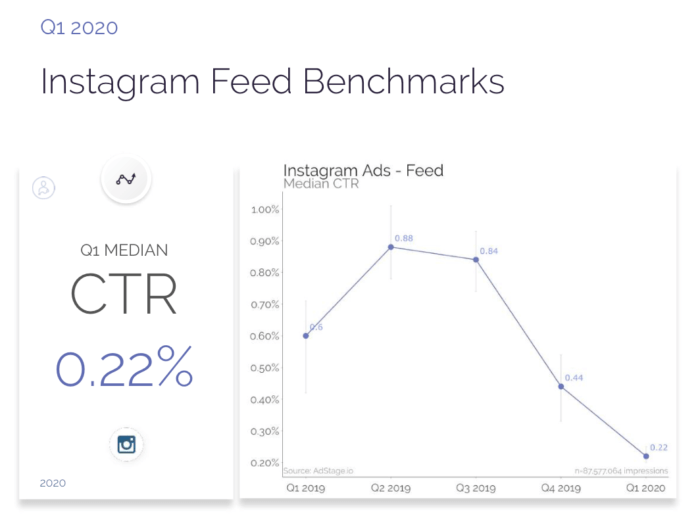
LinkedIn Ad CTR
Although the audience is quite different since LinkedIn targets B2B audiences, there is a similar CTR in LinkedIn of 0.22%.
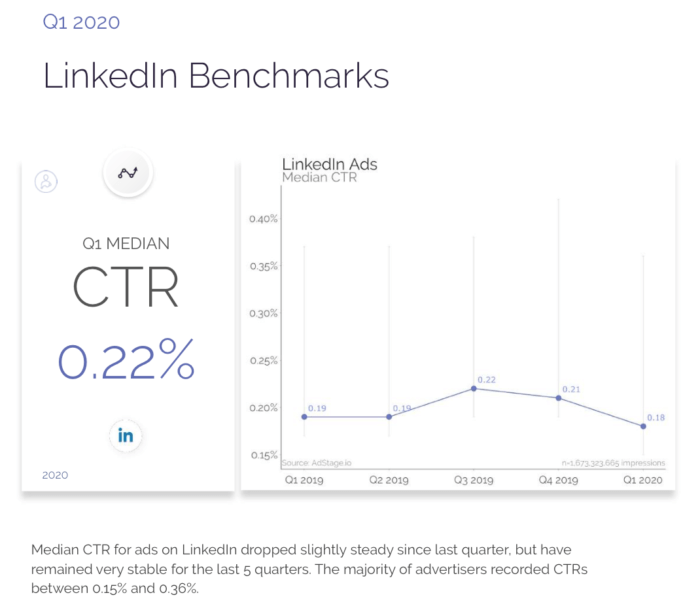
Twitter Ad CTR
Twitter has a higher clickthrough rate, although there is a significant decrease in the last quarter. Fewer impressions are served to Adstage customers in this category so this insight should be treated with caution.
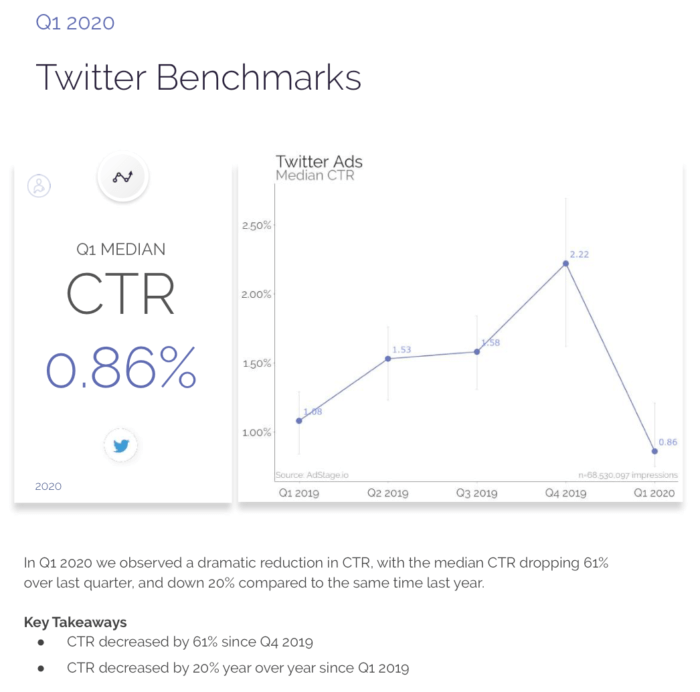
Social media interactions benchmarks
This interesting pie chart comparison from the Social Bakers Q2 Report shows which industries received the most (and least) interactions on Facebook and Instagram in Quarter 2 of 2020. The study was not repeated in the most recent version of the report, however, Social Bakers are now providing detailed industry social media breakdowns for most of the sectors mentioned below.
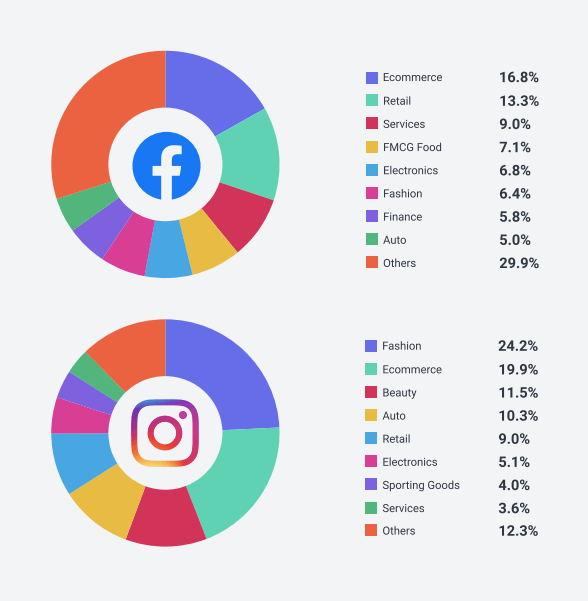
Other sector/industry social media ads average CTR benchmark data
Other media reporting services like Social Bakers and the Merkle Digital Marketing benchmark reports also have useful reports benchmarking different advertising metrics across organic and paid search (Google Ads) plus different social networks, but don’t report absolute CTR probably because this is not permitted by their terms of service with Facebook and Google. However, if you’re involved in improving your ad effectiveness we recommend reviewing the latest:
Historical data for context – comparison of display, search (AdWords) and social ads average CTRs
Since the Google-Doubleclick data is no longer available we’re unable to update this data, but we have kept it in this post since it may be useful for readers to understand historic trends in CTR.
This comparison of average online media clickthrough rates from Marin is useful for modelling the response of digital media for top-level budgets.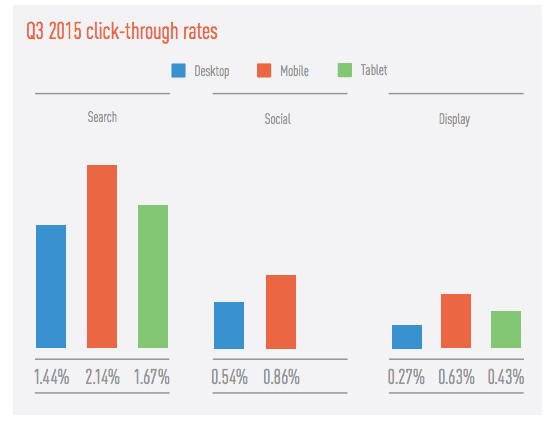
Facebook ad clickthrough rates by sector
Facebook offers different forms of ad formats with different goals will naturally vary in response as these retail Facebook ads from. You can see that Facebook ad CTRs which may be more highly targeted that display ads have significantly higher CTRs, particularly for Lead generation (i.e. adding subscribers to a retailers email list) and Dynamic Product ads (retargeting visitors who have already visited a site with relevant offers). 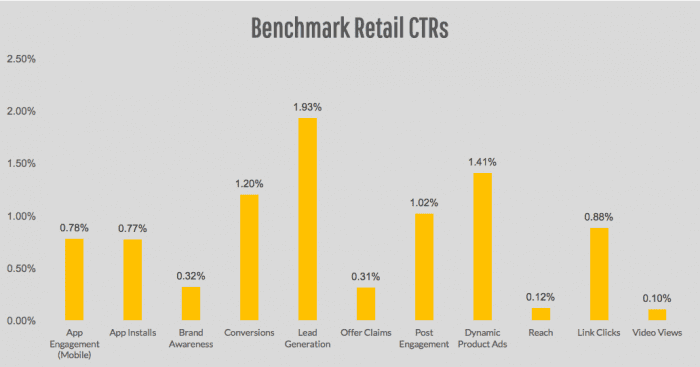
Wordstream also have these summary Facebook ad CTRs by sector:
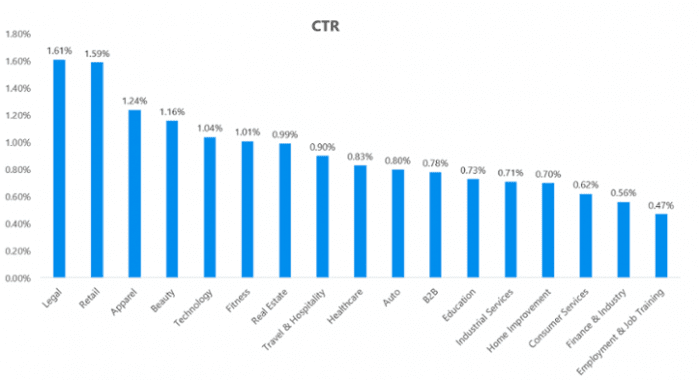
These Facebook Ad CTRs for different types of ad formats are taken from a test run by Smart Insights contributor Marie Page. They show that by using targeting in Facebook it’s possible to improve on general Internet ad clickthough rates.
The challenge of online ad viewabililty
Viewability is another issue for advertisers to consider when evaluating online ad effectiveness as measured by clickthrough rates. Ad blocking also has an impact since ad blockers have increased in popularity across countries and demographics, accounting for 35% of ads in some countries.
Viewability refers to the percentage of ads in a campaign or on a publisher site that are potentially available for clickthrough. Just 44.9% of all ads are clickable according to Google-published viewability data since ads may be below the fold and users do not scroll to see them. This varies across publisher and content category.
Given the impact of viewability and ad blocking on online ad clickthrough rates you can see that there are moves in the industry to only charge for viewable ads, which with increasing options for native advertising will potentially improve the effectiveness of ads.
Variation in online average CTRs for ads by country
This is historic data for reference – for the latest use the interactive Display benchmarking tool.
| Region | Overall Click-through Rate Percent (%) |
| North America | |
| Canada | 0.09% |
| United States | 0.10% |
| EMEA | |
| Austria | 0.11% |
| Belgium | 0.13% |
| Denmark | 0.12% |
| Finland | 0.05% |
| France | 0.12% |
| Germany | 0.11% |
| Greece | 0.17% |
| Ireland | 0.10% |
| Italy | 0.10% |
| Luxembourg | 0.09% |
| Netherlands | 0.14% |
| Norway | 0.11% |
| Spain | 0.12% |
| Sweden | 0.08% |
| Switzerland | 0.12% |
| United Arab Emirates | 0.18% |
| United Kingdom | 0.07% |
| JAPAC | |
| Australia | 0.07% |
| China | 0.12% |
| Hong Kong | 0.17% |
| India | 0.18% |
| Malaysia | 0.30% |
| Singapore |
0.19% |
Source: DoubleClick for Advertisers, a cross section of regions, January and December 2009, Published July 2010
Variation in online average CTRs by ad format
Ad clickthrough rate naturally varies according to placement (position on screen) and ad format (shape and size). The traditional full-banner performs very poorly compared to skyscrapers, the ubiquitous medium rectangle and the newer large rectangle format.
Variation in online ad Interaction Rates by ad format
Interaction rates differ for different ad formats in a similar way to ad formats.
Interaction rate definition:
Interactions are defined as the user does one or more of the following:
- Mouses over the ad for 1 continuous second
- Clicks an Exit link
- Makes the ad display in Full Screen mode
- Expands the ad

